
Renewing the Source of Peace
Bumthang, Bhutan
May 27, 2014
Hi, my name is Hasta. I’m a resident fellow here at I-House, and I’ve had the good fortune of receiving a Davis Project for Peace grant through the I-House facilitated Davis application process. I am going to the Himalayas to engage youth in a community research and development project in rural Bhutan. Bhutan is a small country squeezed between India, China, and Nepal. The people of Bumthang, a rural Dzongkhag (district) in Northern Bhutan, have a long history of weaving ornate cloth from wool and yak hair. Bumthap people have herded these animals across the tundra of their high-altitude homeland for generations. But recently, due to the dangers of Bhutan’s out-of-control wild boar populations (and cultural values prohibiting hunting), many communities have given up shepherding. As a result, rural livelihood opportunities have diminished greatly, sparking an increase in rural to urban migration.
Recent community development projects led by the Bhutan Youth Development Fund (YDF) in the village of Umsang, Bumthang have helped the particularly skilled weavers of this region build workspaces, buy sewing machines, and develop their weaving into marketable products. Building on the work of YDF, I plan to use the Davis Project for Peace grant to engage youth in Participative Action Research (PAR), build sheep enclosures with youth in a hands-on PAR project, and start a fledgling flock in Umsang. Building on the previous developments led by YDF, this project, Renewing the Source of Peace, will help revitalize the art of shepherding through re-introducing the vocation of shepherds, vertically integrating the weaving economy, and reviving the rich culture of Umsang and Bumthang through youth empowerment in PAR projects. PAR is an innovative research and development strategy – more to come on this topic in later entries.
At this point in the project, I am focused on preparations, like booking flights, getting a volunteer visa, making arrangements with my partners in Bhutan, and searching out all the supplies I will need. It’s challenging to navigate the logistics of this type of project, especially on top of the madness of finishing my MA – thesis, finals, and departure. But, it’s rewarding also. And I know, in two months, when I’m sleeping nestled between peaks, under the starry skies of sparsely populated tundra, with a full day of sheep wrangling with Bhutanese teenagers ahead of me, the stress of preparations will feel like a dream.
July 22, 2014
Paro’s narrow, barely land-able valley – with wingtips brushing pine trees, as we see sawed between mountains. Following this, my new friend offered to take me with his family to just two doors down from my current address. They had been away for weeks and their extended family met them at the airport with a fully stocked Bhutanese picnic in the pick up. There is nothing more traditionally Bhutanese than pick nicking. Surrounded by lush green mountains, above the river winding between rice fields, we sat on a big carpet and dined on green chilies, red rice, and Suja – tea made with butter!
July 31, 2014
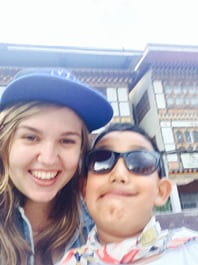 I am sitting in a café in Thimphu, writing this update while listening to my friends chatting in Dzongkha behind me. Sitting at a table nearby, is Lama Shenphen, a monk devoted to helping at-risk youth in Bhutan. He spends his days teaching meditation in the hospital, prison, and slums, to children and people of all ages. In the evenings he goes out and talks to youth who are having a hard time. Often, they moved here to the capital from small villages and are unprepared for the situation they find themselves in. The youth unemployment rate in urban Bhutan is at nearly 25%. Understanding the unemployment problem was one of the main inspirations for this project. Without real livelihood opportunities in rural areas, young people will continue to immigrate to towns that have little to offer them. Often, when their dreams of finding a good job in the city fall through, these youth turn to alcohol, and drugs. That’s where Lama comes in. He teaches them mindfulness and helps them overcome addiction and find purpose. I’m trying to work on the other side of the problem – creating a sustainable economic base in rural Bhutanese communities. When young people grow up in healthy, prosperous rural communities, perhaps they can channel their ambitions into entrepreneurial projects that raise the standard of living in the countryside, and the development of their country as a whole.
I am sitting in a café in Thimphu, writing this update while listening to my friends chatting in Dzongkha behind me. Sitting at a table nearby, is Lama Shenphen, a monk devoted to helping at-risk youth in Bhutan. He spends his days teaching meditation in the hospital, prison, and slums, to children and people of all ages. In the evenings he goes out and talks to youth who are having a hard time. Often, they moved here to the capital from small villages and are unprepared for the situation they find themselves in. The youth unemployment rate in urban Bhutan is at nearly 25%. Understanding the unemployment problem was one of the main inspirations for this project. Without real livelihood opportunities in rural areas, young people will continue to immigrate to towns that have little to offer them. Often, when their dreams of finding a good job in the city fall through, these youth turn to alcohol, and drugs. That’s where Lama comes in. He teaches them mindfulness and helps them overcome addiction and find purpose. I’m trying to work on the other side of the problem – creating a sustainable economic base in rural Bhutanese communities. When young people grow up in healthy, prosperous rural communities, perhaps they can channel their ambitions into entrepreneurial projects that raise the standard of living in the countryside, and the development of their country as a whole.
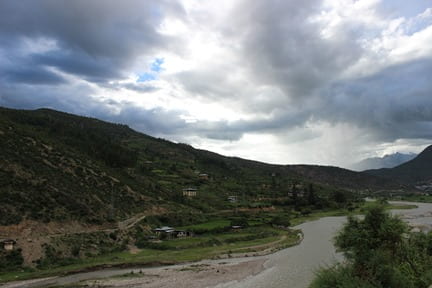
A big part of Davis Project for Peace is the youth volunteer component. One of the nationwide programs that falls under the umbrella of YDF (The Youth Development Fund) is the Young Volunteers in Action (Y-VIA) network. There are Y-VIA nodes in villages and cities all over the country. I’ve been communicating with the Y-VIA youth and coordinator in my project village about the work they’ve already done assessing the needs and strengths of the village. Right now, I’m still in Thimphu (Bhutan’s capitol) attending meetings with YDF staff, and working through documents, plans and logistics. But soon, I’ll be travelling to the village, conducting training seminars with youth, meeting with community members and starting construction!
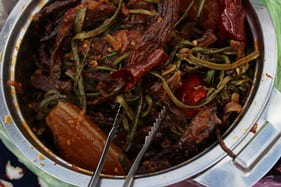
The project of course makes being here very exciting, but there is also just something special about this kingdom, beautiful Bhutan. Here are some photos I took in Paro valley (one hour from Thimphu), and one of chilis, Bhutan’s official cuisine! The sky is so vast here. I find the valleys stretch and pull me inward, until I notice some small temple perched on a mountaintop, and realize where I am, again. Today is the anniversary of the Buddha’s first sermon, a national holiday. Everyone is off and the office is closed. Now that I’ve finished updating you, I will travel to a temple that was built in 800 A.D. One of the oldest temples in Bhutan, Kichu Lakhang, as it’s called, has an orange tree that bears fruit all year, even in the middle of the Himalayan winter.
August 15, 2014
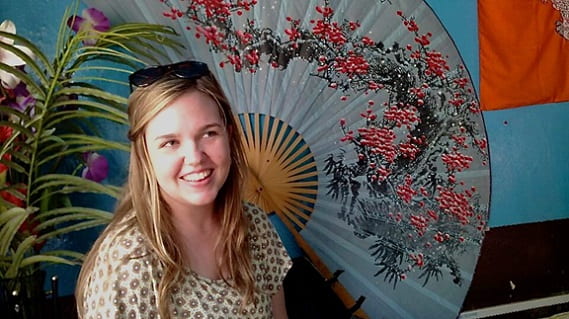
Hanging out at a Local Daba / Momo & Cha
Chili lips, endless chatting, and checking in… with what’s really happening
“I feel like you’re not a chilip – haha.” My friend told me as she was passing me a piece of melon. We were trying a new type of melon she found at the sabji bazaar (vegetable market). “I washed the fruit with tap water,” she said. While most Bhutanese prefer to drink filtered water, they find tap water perfectly usable for small things, like washing vegetables. However, for foreigners (or chilips), a little bit of unpurified water can cause all kinds of stomach problems, even dysentery. While, this example may have gotten a little grotesque, the idea I’m trying to convey is how very much at home I’ve been made to feel here, in Bhutan. Though my blondish hair and pale skin making me a walking attraction, my friends, hosts, and colleagues here treat me like one of the family.
Recently, I went with my friends to pick up their son at school and we stopped at a Zakhang, a small restaurant that serves simple local snacks like potato curry, deep fried chilies, and momos. As I mentioned last time, chilies are a major staple of Bhutanese cooking. You can have cheese with chilies, or potatoes with chilies, or, well, just chilies with another kind of chilies. I have a little bit of a taste for spicy food and I’ve gotten to the point where I can’t stand my breakfast without azaay, chili sauce. Small Zakhangs like the one depicted in the pictures above and below are all over Bhutan. You can barely tell they are there, but if you peak inside a living room, with the door open, and ask, “Momo [dumpling]? Cha [tea]?” You will likely find yourself in a Zakhang, munching on three kinds of chilies and inhaling steaming hot tea from the water boiler in the back.
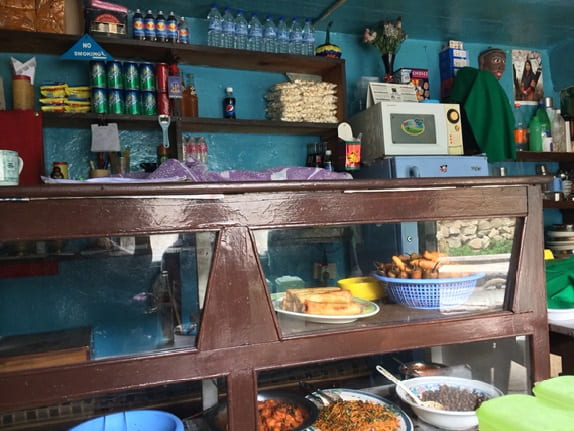
Display of premade snacks – the big fried chilies are on the upper right.
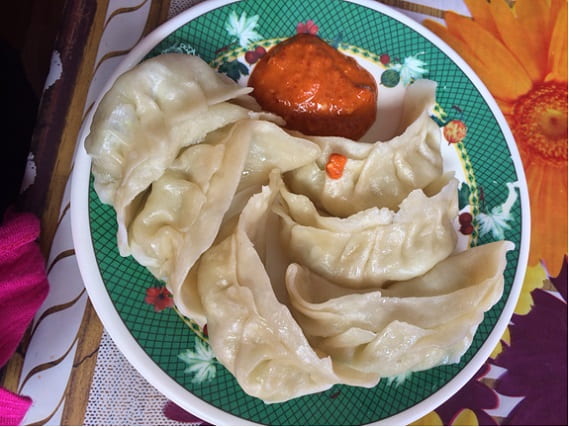
Momos: dumplings filled with meat or vegetables, steamed, not fried. They are my favorite and I like them with chili sauce!
The ways we eat, cook, and take delight in taste are all so personal and particular to our unique ways of being in the world. Food offers us a vibrant illustration of cultural contrast. When Bhutanese style meets western taste, the results can be delicious, surprising, or hilarious! Which is the case with this new coffee shop’s sign:
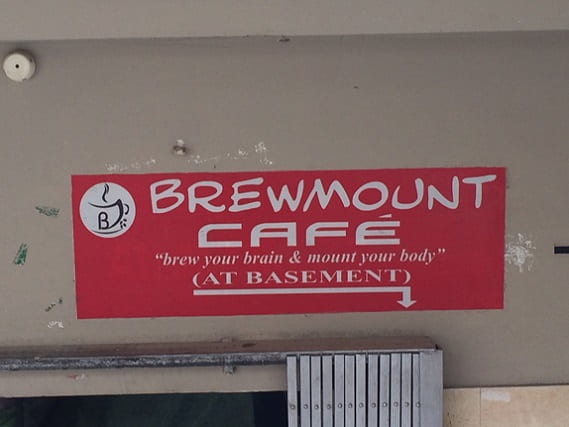
Living and working in a foreign country, especially one as formerly isolated as Bhutan, is a constant balancing act. The longer I am here, the more aware I become of subtler and subtler cultural differences. As I become more aware of the way people think and the way society functions here, the contrast with my old familiar mental patterns becomes more apparent. And, I’m sure I’m changing along the way – adopting new habits, the function of my environment.
I’ve been studying international relations, development, and economics for a long time. I’ve been working internationally for a long time as well, and spent considerable time in Bhutan and other countries that are far from my home base, and the expectations of Americans. Still, sometimes this apparent familiarity with another culture is little more than a gradual numbing, and something can grab my attention and snap me straight to the reality of where I really am.
Yesterday, I was with youth, who were presenting their findings from the Participative Action Research they conducted in the remote village. They had questioned residents from different households about their income, with the aim of identifying the part of the community with the greatest potential and the greatest need for development intervention. The youth had compiled their results and were listing their findings from oh so many detailed conversations with community members. They had made a graph and pointed to the grouping on the lowest end of the scale, listing income and expenditures in Ngultrum (the local currency). Earlier that morning, I had been looking online at one-way tickets from Bhutan to India. I did I double take; the amount listed for annual income per household was equal to the cost of my one-way ticket. In other words, due to the poor infrastructure, market access, and other obstructions that are preventing the development of this region, an entire family in this village is living on less than one dollar per day.
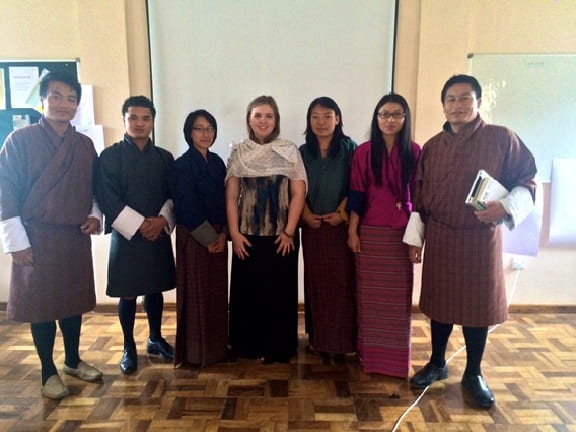
Youth Participative Action Researchers and myself, at a presentation to YDF colleagues. They are all wearing Bhutan’s national dress: Kira for women, and Gho for men.
The process the youth went through to correctly identify the particular challenges, needs, and assets of the village residents was long and arduous. Working in Bhutan, particularly in the context of community development, requires patiently building relationships with the people you work with, more than anything else. I find this to be one of the most obvious cultural differences in the work-world (not that professional relationships aren’t important in the West, of course they are!). Participative Action Research is just as it sounds: participative. Working this way takes a lot of talking, and even more listening. It is based on the premise that the best development solutions are found through actively engaging the project community. They have the best local knowledge of problems, solutions, feasibility, and assets. When that knowledge is collected, analyzed, and combined with a toolkit of economic development models – the research part of PAR – the projects that result are almost destined to succeed.
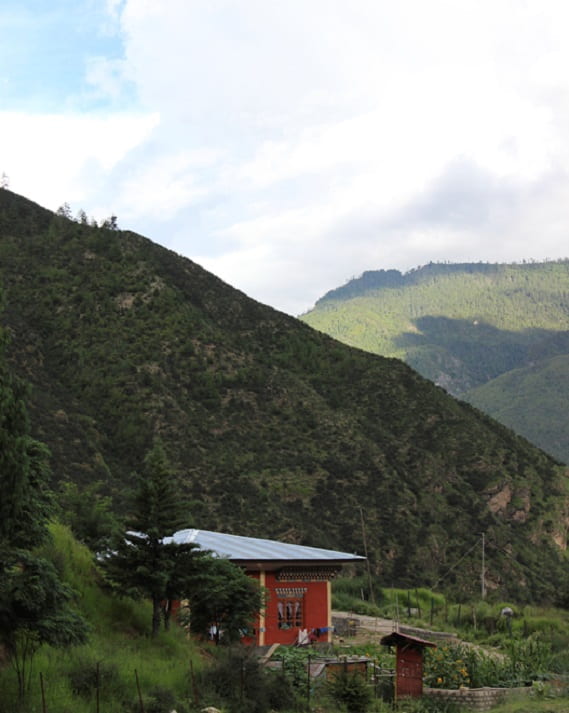
Living in Bhutan: tucked away in the mountains, 1.5hrs walk from the road.
The whole inspiration for me to study International Relations in graduate school began when I volunteered in Bhutan at age fourteen. Now, my career and education are all geared around contributing to creating international understanding and productive development partnerships. Working with young people from diverse backgrounds is also a passion that stemmed from that time. I feel so happy to combine these two guiding interests of my life in this one project that will hopefully help people, and make a tangible impact.
The mountains of Bhutan are very steep. Depicted here is a very famous ancient monastery that was built literally into the cliff-face. The name of the place is Tak Seng, or “Tiger’s Nest.”
I first went to Bhutan with my parents, when they were working there. That’s when I started volunteering with Bhutanese youth. Here I am hiking in a fertile valley in central Bhutan a long time ago.